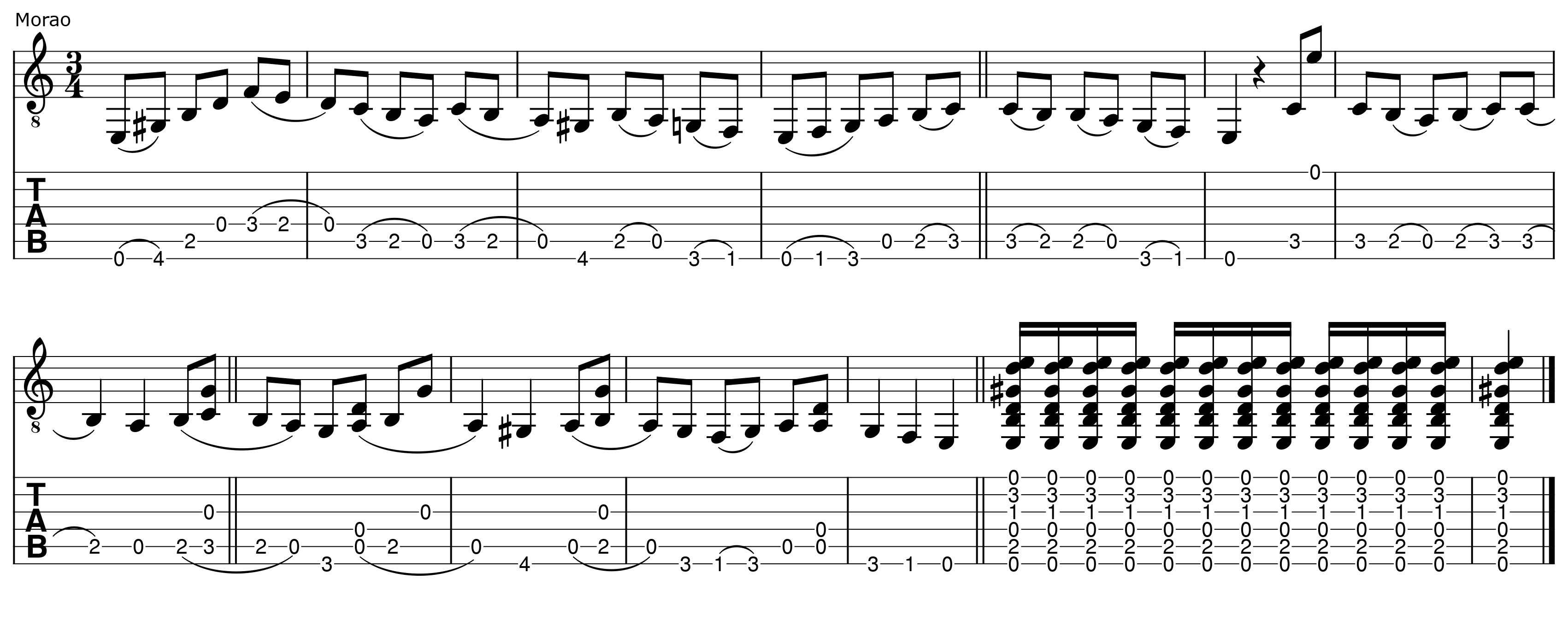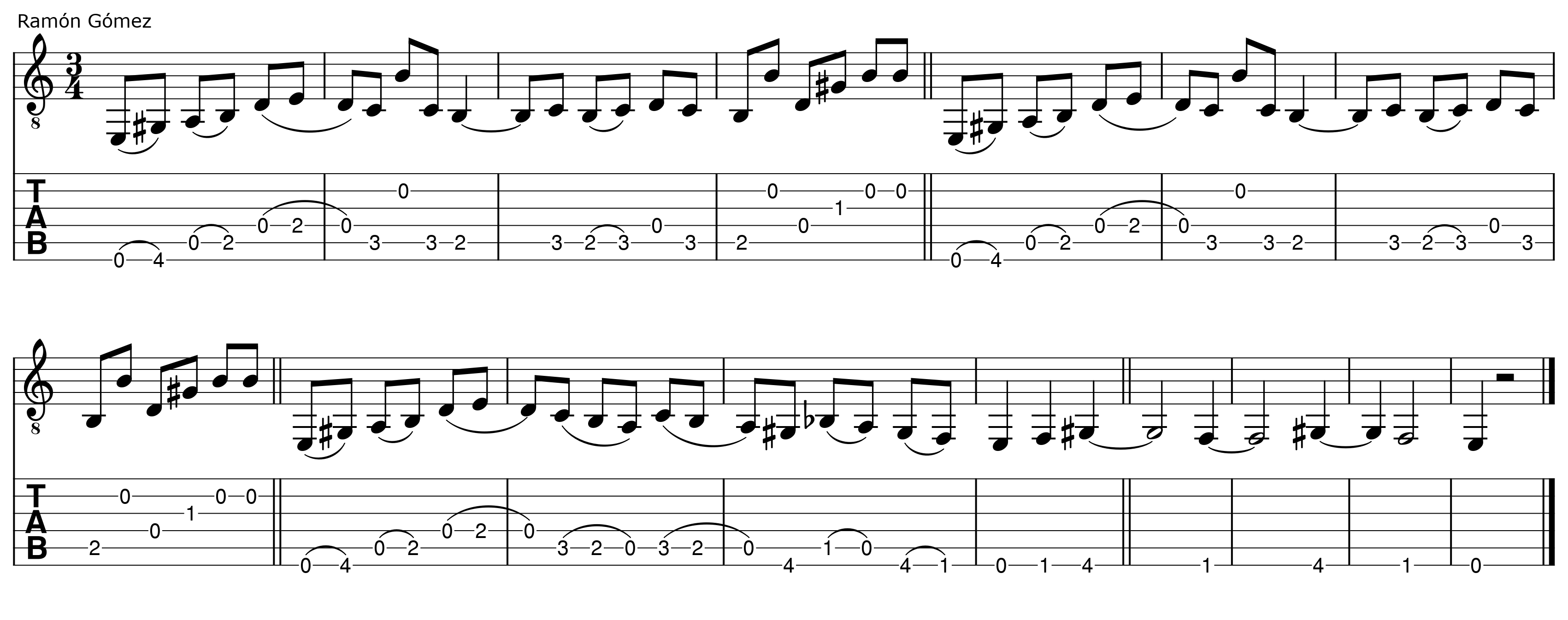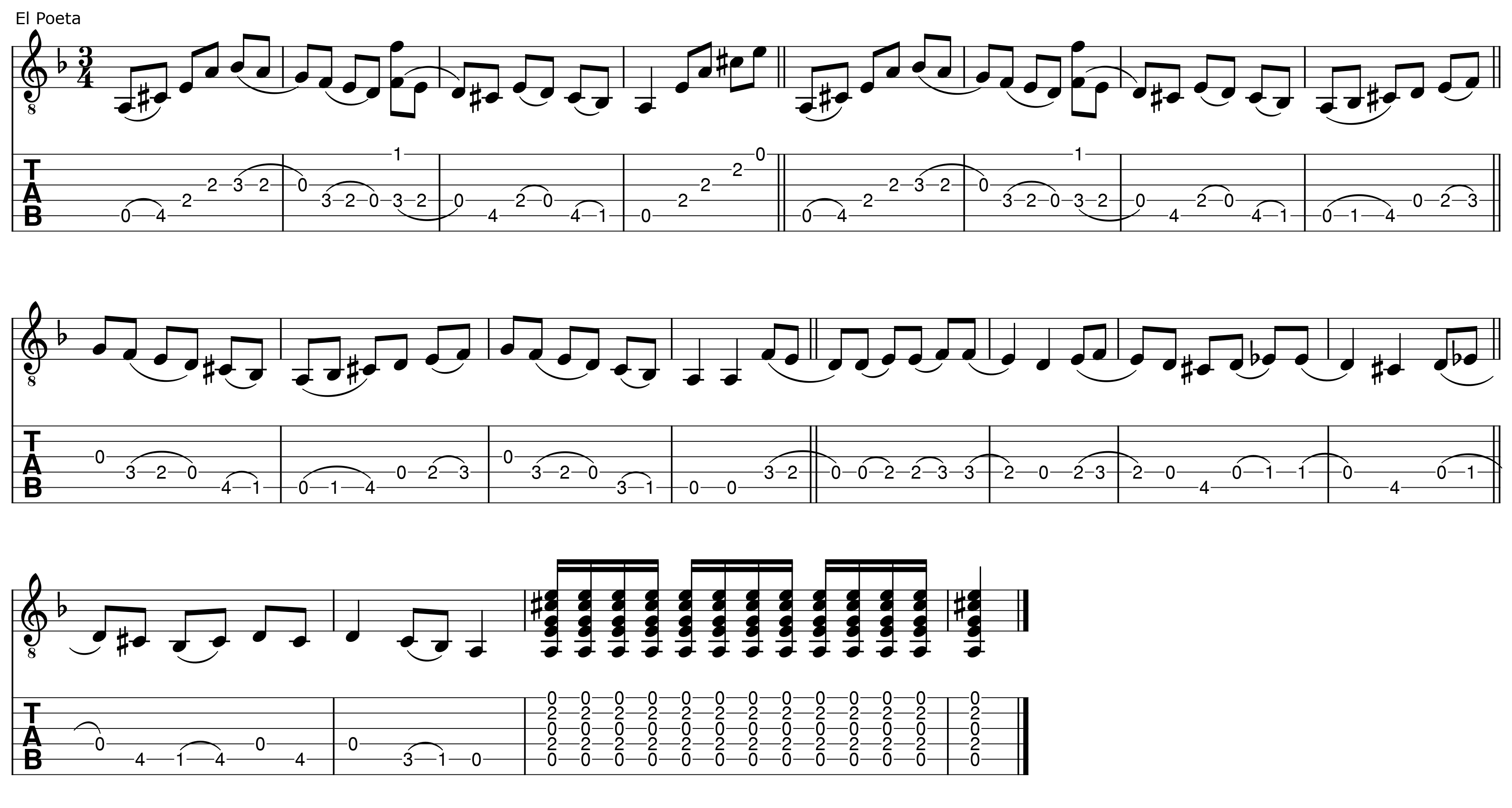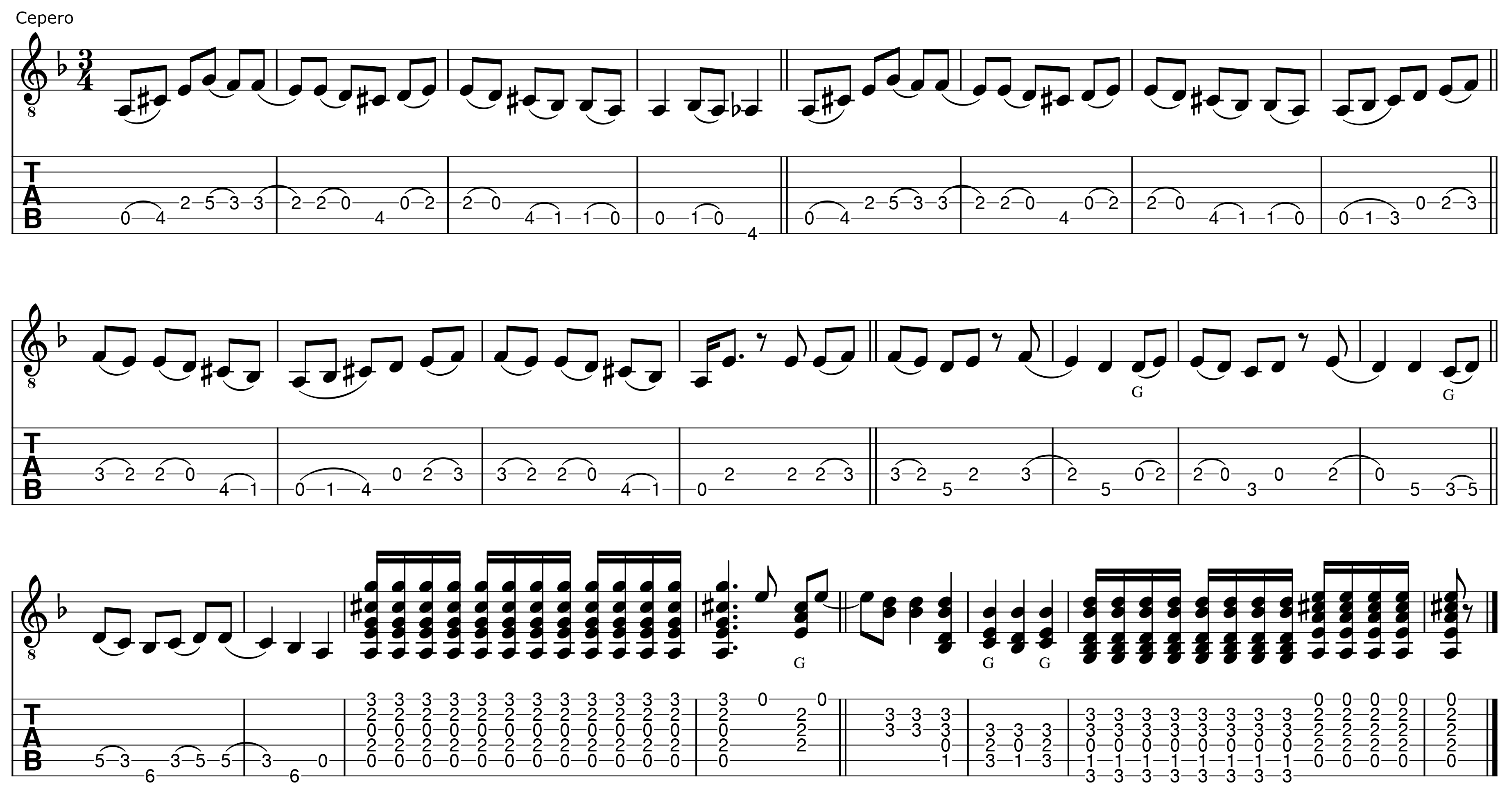
This classic falseta is closely associated with Morón through Diego de El Gastor (1908-1973) and is observed in several recordings from the 1950s and 1970s of the jerezanos Manuel Morao, el Poeta and Paco Cepero. Ramón Gómez also recorded it in 1952 with Niño de Las Cabezas, although it is not clear whether this guitarist has anything to do with Las Cabezas (located squarely between Morón and Jerez). The music is written in 3/4 time (like soleá) and the double bar lines separate whole compases between beats 12 and 1.
Manuel Morao in 1951 with Manolo Caracol (capo at sixth fret). Morao also recorded this falseta por medio in 1956 with la Paquera. In the second half of the falseta, use your index finger for the rhythmic counterpoint on the open treble strings. Notice that the notation reflects a strict 12-beat pattern with an extra six beats at the end, but if you repeat measures 4 and 5, it works out to a full 12 beats.

Ramón Gómez in 1952 with Niño de Las Cabezas (capo at fourth fret). The minor fifth degree (B flat por arriba) in the second half of the third compás must have been unusual for its time. The ending is different but maintains an element of the Morón sound.

El Poeta in the 1970s with el Chocolate (capo at first fret). Notice that the dizzying chromaticism heard toward the end also involves the minor fifth degree (E flat por medio).

Paco Cepero in the 1970s with Perla de Cádiz (capo at fifth fret). A basic bulerías rhythm is transcribed at the end of the falseta.
